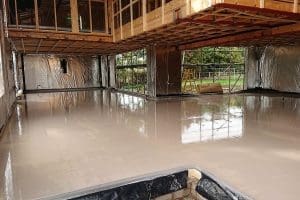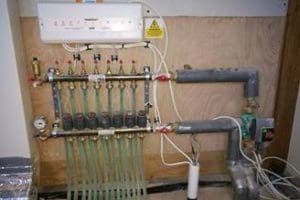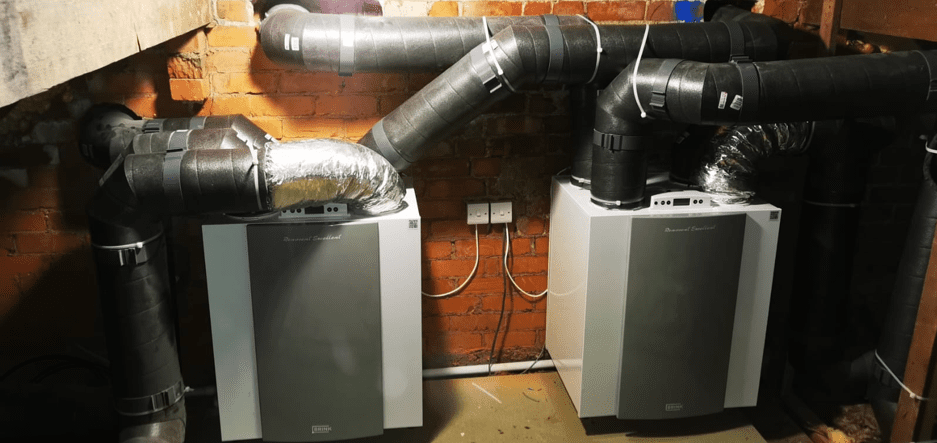Under Floor Heating
A wet underfloor heating system works by circulating heated water around a grid of pipes set within a floor.
In only requiring a low flow temperature there are significant reductions in running costs, whether using a heat pump or a dirty fossil fuel boiler.
By maintaining a consistent room temperature across the whole of a room there are health benefits in maintaining air quality with no hot/cold spots. Room space is also created and with no unsightly radiators, wall space is freed up.
For new build homes, there is the added benefit of helping meet increasing sustainability requirements imposed by planning and building control legislation by reducing carbon emissions and running costs.
Traditional wet underfloor heating systems have pipes laid within a screed which provides an excellent thermal mass and is most suitable for any low-temperature system and well insulated solid ground floors. This is the most effective and efficient form of underfloor heating and is ideally suited to new build properties.
For suspended floors, it is possible to use a screed system but consideration is required in considering weight and insulation levels. Alternatives exist with routed insulation / dry screed board systems or aluminium spreader plates which are less efficient when working with a heat pump having less thermal mass.
Radiators
If underfloor heating is not suitable, conventional wall-hung radiators are an alternative option for use with heat pumps. These two systems are frequently installed to complement each other, typically with underfloor to a ground floor living space and radiators to upper-floor bedrooms where heating may only be required at limited times of the day.
When combined with a low-temperature heat pump, radiators need to be sized to ensure they deliver the necessary heat into a room to keep it warm. This will usually mean the panels are larger than may be expected with a fossil fuel system. A number of radiator manufacturers have ranges suitable for use with heat pumps.
Fan-coil radiators, which are smaller than conventional ones, are a further option being designed to work with low flow temperatures making them ideal for heat pump installations.
With a new generation of heat pumps emerging that are capable of delivering flow temperatures comparable to those of fossil fuel boilers, there are greater options for installing into existing properties with radiator systems.








